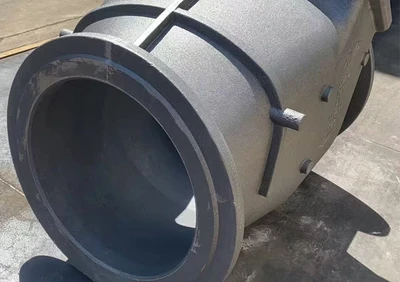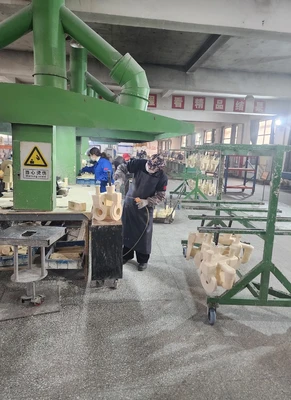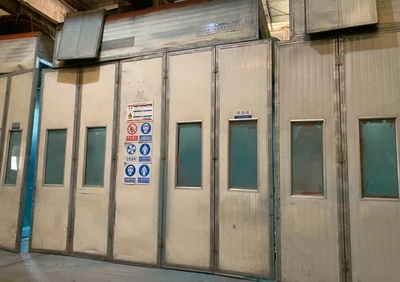In the world of metal casting, lost foam casting stands out as a versatile and innovative method, particularly for producing complex components used in industries like agricultural machinery casting. If you’ve ever wondered how intricate metal parts, such as those for heavy-duty equipment, are created with precision, this process is key. This blog explores what lost foam casting is, how it functions, and its applications, with a focus on its use by leading manufacturers like Balasen in China. By understanding this technique, engineers and businesses can leverage its benefits for cost-effective and high-quality production.
Lost foam casting, also known as evaporative pattern casting (EPC), is a casting process that uses a foam pattern to form the mold. Unlike traditional methods, the foam pattern, typically made from expandable polystyrene (EPS), is coated with a refractory material, placed in a sand-filled flask, and then vaporized by molten metal during pouring. This results in a near-net-shape casting, minimizing the need for extensive machining.
At Balasen, a leading lost foam casting China provider, this method is used to produce parts for agricultural machinery casting, carbon steel casting China, and alloy steel casting China. The process is ideal for creating complex geometries, such as engine blocks or transmission housings, due to its ability to replicate intricate foam patterns with high dimensional accuracy (CT6–CT9 tolerances, per ISO 8062).
| Feature | Description |
|---|---|
| Material | EPS foam pattern, dry sand mold |
| Tolerances | CT6–CT9, surface roughness Ra 6.3–50 μm |
| Applications | Engine blocks, gearboxes, agricultural parts |
| Materials Used | Gray iron, ductile iron, carbon steel, alloy steel, aluminum |
The lost foam casting process involves several steps, each critical to achieving high-quality castings:
Foam Pattern Creation: A foam pattern is crafted using EPS, either through molding, machining, or assembly. This pattern includes gating systems and risers.
Refractory Coating: The foam pattern is coated with a permeable refractory slurry, forming a hard shell to withstand molten metal.
Mold Preparation: The coated pattern is placed in a flask, surrounded by unbonded dry sand, and compacted via vibration to ensure stability.
Pouring: Molten metal (e.g., carbon steel, alloy steel, or aluminum) is poured into the flask, vaporizing the foam and filling the cavity to form the casting.
Cooling and Cleaning: After cooling, the casting is removed, cleaned, and undergoes finishing processes like shot blasting or CNC machining.
Balasen employs advanced equipment to streamline this process, ensuring precision for agricultural machinery casting and other applications. The dry sand used is recyclable, making the process environmentally friendly compared to traditional sand casting.
Lost foam casting offers several benefits, making it a preferred choice for manufacturers like Balasen in China:
Complex Geometries: The process excels at producing intricate parts, such as engine blocks with internal cavities, which are challenging for custom sand castings.
Near-Net-Shape Casting: Minimal machining is required, reducing costs and lead times, especially for alloy steel casting China projects.
Environmental Benefits: The use of recyclable dry sand aligns with energy-saving and emission-reduction goals, a priority for modern foundries.
Versatility: It supports a wide range of materials, including carbon steel casting China, manganese steel casting foundry alloys, and aluminum, catering to industries like agriculture and mining.
A 2023 industry report highlighted that lost foam casting can reduce production costs by up to 20% for complex parts compared to traditional sand casting, due to lower machining needs and material waste.
| Benefit | Impact |
|---|---|
| Cost Savings | 15–20% reduction in machining costs |
| Design Freedom | Complex internal cavities achievable |
| Material Range | Supports ferrous and non-ferrous alloys |
| Environmental | Recyclable sand, reduced waste |
Lost foam casting is widely used in agricultural machinery casting, producing durable components like gearbox covers, tractor parts, and pump housings. Balasen, located in Xuzhou, Jiangsu, specializes in these applications, serving global clients in agriculture, automotive, and mining. The process is particularly suited for carbon steel casting China and alloy steel casting China, offering high strength and wear resistance for heavy-duty equipment.
Beyond agriculture, lost foam casting is used for engine blocks, valve bodies, and mining machinery parts. Its ability to handle weights from 0.5 kg to 100 kg and sizes up to 1000 mm × 800 mm × 500 mm makes it versatile for various industries.
Q1: What is lost foam casting?
Lost foam casting is a casting process where a foam pattern is coated with refractory material, placed in a sand mold, and vaporized by molten metal to form a precise casting.
Q2: Is lost foam casting better than sand casting?
Lost foam casting offers better dimensional accuracy (CT6–CT9 vs. CT8–CT12 for sand casting) and reduced machining needs, but it may have higher initial setup costs for foam patterns.
Q3: What are the disadvantages of lost foam casting?
Disadvantages include high pattern costs for low-volume production and potential defects like porosity if the process isn’t tightly controlled.
Q4: What materials can be used in lost foam casting?
It supports carbon steel, alloy steel, manganese steel, gray iron, ductile iron, and aluminum, making it versatile for agricultural machinery casting and more.
[1]. International Electrotechnical Commission. (2020). "IEC 60947-2: Low-voltage switchgear and controlgear – Part 2: Circuit-breakers."
[2]. Wikipedia. (2023). "Lost-foam casting." https://en.wikipedia.org/wiki/Lost-foam_casting
[3]. Balasen Equipment Co., Ltd. (2023). "Lost Foam Casting Services." https://www.balasen.com/products/lost-foam-casting/
[4]. Wang, Y., et al. (2022). "Advances in lost foam casting for complex geometries." Journal of Manufacturing Processes, 74, 123–135.
 2A Great Steel Casting and Machining Part Used for Industrial AreaFebruary 27, 2025This is a special steel casting and machining part produced by balasen company recently.The material is 42CrMo4. This is to export to Europe customer.material quality.Then we make a full machining fo...view
2A Great Steel Casting and Machining Part Used for Industrial AreaFebruary 27, 2025This is a special steel casting and machining part produced by balasen company recently.The material is 42CrMo4. This is to export to Europe customer.material quality.Then we make a full machining fo...view Pump Shell-Ductile IronFebruary 27, 2025This is a great ductile iron part named pump shell used for pump industry area.Balasen designed advanced pouring system to feed and float into the mold cavity.We have opened pouring system deployment,...view
Pump Shell-Ductile IronFebruary 27, 2025This is a great ductile iron part named pump shell used for pump industry area.Balasen designed advanced pouring system to feed and float into the mold cavity.We have opened pouring system deployment,...view What Are the Differences Between Resin Sand Casting and Green Sand Casting?June 20, 2025Choosing the right casting method is crucial for producing high-quality metal components, especially for industries like agriculture. Resin sand casting and green sand casting are two widely used tech...view
What Are the Differences Between Resin Sand Casting and Green Sand Casting?June 20, 2025Choosing the right casting method is crucial for producing high-quality metal components, especially for industries like agriculture. Resin sand casting and green sand casting are two widely used tech...view Is Lost Foam Casting Better Than Sand Casting for Agricultural Machinery?June 20, 2025When manufacturing components for agricultural machinery casting, choosing the right casting method is critical for balancing cost, quality, and performance. Lost foam casting and custom sand castings...view
Is Lost Foam Casting Better Than Sand Casting for Agricultural Machinery?June 20, 2025When manufacturing components for agricultural machinery casting, choosing the right casting method is critical for balancing cost, quality, and performance. Lost foam casting and custom sand castings...view Balasen Painting CapabilityFebruary 27, 2025Balasen has adequate painting equipment and capability; we can do maximum three layers of coating per client requirement. it includes primer, intermediate and final coat. The nominal thickness is 320 ...view
Balasen Painting CapabilityFebruary 27, 2025Balasen has adequate painting equipment and capability; we can do maximum three layers of coating per client requirement. it includes primer, intermediate and final coat. The nominal thickness is 320 ...view What Is Resin Sand Casting and How Does It Work?June 20, 2025When it comes to manufacturing durable metal components for industries like agriculture, resin sand casting is a go-to method for producing high-quality, intricate parts. Known for its strength and pr...view
What Is Resin Sand Casting and How Does It Work?June 20, 2025When it comes to manufacturing durable metal components for industries like agriculture, resin sand casting is a go-to method for producing high-quality, intricate parts. Known for its strength and pr...view